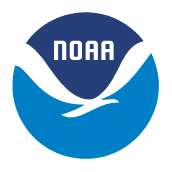Predictions
GSL develops world-class environmental prediction models used to support decision-making and public safety. However, there is much more to a model than the output you see on your smart phone app. Behind the scenes, GSL researches advanced data assimilation techniques, complex atmospheric composition and physics processes, and useful visualizations of the output. Another important piece of the process is verification of the model. How well did it perform and where can we improve it? GSL researchers are continuously studying innovations in these areas. You will find links to our models that are in development below.

North American Models
These models are pre-operational and should not be used for operational purposes. The model websites are not supported 24/7 and may be unavailable during system outages.
Rapid Refresh Forecast System (RRFS)
Experimental RRFS v1 - The Unified Forecast System (UFS) Rapid Refresh Forecast System (RRFS) application will be NOAA's flagship hourly updating, convection-allowing deterministic and ensemble prediction system. This new 3-km system will extend over a large North American domain. The first version of the RRFS has been frozen, and development has shifted to work on the second version of the RRFS.
Experimental RRFS v2 - GSL is testing the Joint Effort for Data Assimilation Integration (JEDI) software framework and the MPAS (Model Prediction Across Scales) dynamic core. GSL and partners are working on enhancements to the data assimilation design including use of additional observations, enhanced multiscale techniques, coupling of earth system components and model physics improvements, RRFS is based on 30 years of continuous research.
RRFS Smoke Dust (RRFS-SD) - GSL and NOAA's Air Resources Laboratory developed a module within RRFS that predicts aerosols like smoke, dust, and pollen. This model provides advanced, hourly-updated forecasts of smoke and dust dispersion across North America using a high-resolution 3 km grid, and integrates data on wildfire emissions and dust sources to predict near-surface and vertically integrated concentrations. By offering precise and timely information on air quality, RRFS Smoke and Dust aids in managing public health risks and improving visibility forecasts during wildfire and dust storm events.

High Resolution Rapid Refresh (HRRR) Model
The significance of the HRRR - From its inception as an experiment to improve forecasts for aviation, to the transition of its final update to NOAA National Weather Service operations, the Global Systems Laboratory's pioneering High-Resolution Rapid Refresh (HRRR) weather model established a remarkable resume of research accomplishments. Experimental versions of the HRRR improved the accuracy of short-term hazardous weather model predictions, icing and fog guidance for aviation, as well as better predictions of precipitation from long trains of Pacific storms called atmospheric rivers, which are vital to California's water supply. Another version improved prediction of low-level winds in complex terrain, leading to more efficient wind energy production. Transmission grid operators use HRRR forecasts to factor weather conditions into calculations of how much energy they can send down high-voltage lines.
One experimental version that's received prominent national exposure has been HRRR-smoke, which for the past three years, has become the go-to way for forecasters, public health officials, emergency operations and wildland firefighting managers to visualize the extent and spread of wildfire smoke across the country during fire season.
Over the past few years, NOAA National Weather Service meteorologists have been able to access experimental HRRR products to support the official model guidance they use to develop forecast products for the public. Now the HRRR is part of the operational model suite run by the NOAA National Centers for Environmental Prediction, the NWS environmental modeling arm.
- High-Resolution Rapid Refresh (HRRR - Operational)
- HRRR Hawaii (Experimental - 3km grid)
- HRRR Caribbean (Experimental 3km grid)
- HRRR Alaska (Operational as of 2020)
- HRRR Aviation Graphics (Experimental subhourly - forecasts every 15 minutes out to 18 hours)
- HRRR Smoke (Operational as of 2020 - 3km grid)
- HRRR Smoke Alaska (Operational as of 2020)

RAP-Chem - The Rapid Refresh (RAP) Chemistry model, developed by GSL, integrates chemical data with weather predictions to provide detailed, hourly-updated forecasts of atmospheric pollutants over North America. With a 13 km grid resolution, RAP-Chem predicts concentrations of various aerosols and trace gases, such as ozone, carbon monoxide, and particulate matter. This model supports air quality management and public health by offering accurate, real-time information on pollutant dispersion and chemical transformations in the atmosphere.
Experimental Global Models
FV3 Chem 12KM
The GSL FV3-Chem model, developed by GSL, integrates atmospheric chemistry to predict the movement and evolution of pollutants, including ozone, particulate matter, and other trace gasses.
- 13km FV3
- 13km FV3-Chem
- 13km FV3-CCPP Chem
- Hurricane Forecast Improvement Project (HFIP) experimental products
Earth Prediction Innovation Center and the Unified Forecast System (UFS)
The UFS Short-Range Weather application is designed for short-range weather forecasts at regional scales and time scales from minutes to several days. This modeling system includes all of the pre- and post-processing capabilities needed to run an end-to-end forecast, from defining a model grid to generating graphics plots of the model forecast field output. The NOAA Global Systems Laboratory (GSL) is a co-lead on the releases.
GeoFlow
Some processes in the atmosphere are random and cannot be precisely predicted. GSL has developed the GeoFLuid Object Workflow (GeoFLOW) to support very high resolution simulations. GeoFLOW is a framework for partial differential equation solvers to enable the rapid development of computational models relevant to problems in weather forecasting and atmospheric science. GeoFLOW simulations help our prediction models compute such statistical behavior correctly as model resolutions increase.
Analysis Systems
RTMA/URMA
The 3D Real-Time Mesoscale Analysis (RTMA) and UnRestricted Mesoscale Analysis (URMA) systems, developed by NOAA's Global Systems Laboratory (GSL), provide high-resolution, three-dimensional analyses of atmospheric conditions. These systems assimilate a wide range of observational data, including surface, radar, and satellite inputs, to create accurate and timely representations of weather variables such as temperature, wind, and humidity. By offering detailed, real-time insights into mesoscale weather phenomena, 3D RTMA and URMA support critical decision-making processes in weather forecasting and emergency response.
Testbeds
Developmental Testbed Center (DTC)
Broad community participation is critical to accelerate the pace of improvements in numerical weather prediction and Earth system models. GSL is a collaborating partner in the DTC to support community involvement by developing modeling infrastructure, assessing contributed innovations, and organizing events to bring together the research and operational communities.
Data Assimilation
JEDI
The Joint Effort for Data-assimilation Integration (JEDI) system is a cutting-edge, unified data assimilation framework that delivers advanced data assimilation techniques, excellent interoperability, and robust scalability. GSL's roles include using the JEDI system as the analysis framework for the Model Prediction Across Scales (MPAS) for Geostationary Lightning Mapper, aerosol optical depth data, and surface observations, among others. JEDI is under collaborative development between NOAA and cross-agency partners through the Joint Center for Satellite Data Assimilation (JCSDA).
GSL participates in the NOAA Hazardous Weather Testbed , Aviation Weather Testbed , and the Hydrometeorology Testbed with several experimental models under the microscope. The primary goals of the testbeds are to accelerate the transfer of promising new tools from research to operations, inspire new initiatives for operationally relevant research, and identify and document sensitivities in the performance of state-of-the art experimental high-resolution modeling systems.
Our Mission
Lead research and directed development through the transition of environmental data, models, products, tools, and services to support commerce, protect life and property, and promote a scientifically literate public.
Research Areas
Organizational Excellence, Earth System Prediction, Advanced Technologies, and Decision Support are the foundation to achieving the GSL Grand Challenge: Deliver actionable global storm-scale prediction and environmental information through advanced technologies to serve society.
Global Systems Laboratory

